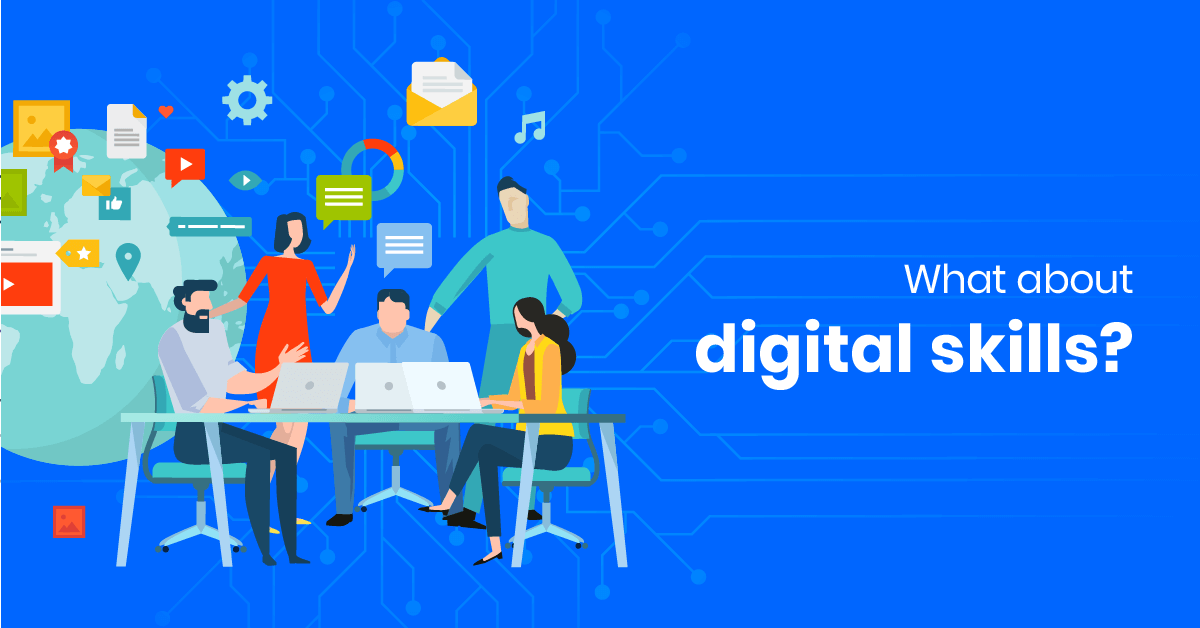Digital skills training and development for employees in the 21st century
Technology is transforming at a pace that’ll leave most companies spinning. Advances like artificial intelligence, machine learning and big data continue to transform the way we communicate, work, market, and make decisions. The only problem is, the talent pool isn’t keeping up!
The World Economic Forum predicts that a whopping 133 million new roles may emerge globally by 2022. Without knowing what these roles will be, new entrants to the job market aren’t able to prepare for them via traditional educational systems. What’s more, currently employed people depend on work experience and training to sharpen their technical skills.
So, the result is a struggle to find people with the digital talent to make your business soar. And you know what they say: if you can’t find ‘em, make ‘em! Maybe that’s not exactly the saying. Still, it’s time to get your hands dirty and close that tech skills gap yourself, through staff training.
What are the basic digital skills your employees need the most?
This might come as a surprise, but research has found that 11.3 million people lack the full suite of basic digital skills, and 10% of employees have no basic digital skills at all. So, if you’re convinced that digital skills training and development for employees, your employees, is critical to future success, then these are the basic digital skills you should start with:
- Device setup: Turning on (and off), logging in and connecting to wifi on a phone, tablet, laptop and computer.
- Digital communication: Using email and applications like Slack and WhatsApp to communicate with team members.
- Digital collaboration: Uploading, sharing and editing documents online using cloud-based applications like Google Drive and Dropbox.
- Cybersecurity: Understanding the basic security risks associated with viruses, unsecured sites, phishing and information theft.
- Information processing: Seeking, verifying, organizing and summarizing online information.
- Data storage: Storing and backing up documents and data on the cloud, and/or via a backup drive.
- HR processes: Making and receiving payments, submitting leave forms, signing HR forms and completing performance appraisal surveys via HR applications, like BambooHR.
- eLearning: Using a learning management system (LMS) to engage in training.

Why are digital skills important for your company’s future?
Now you know what the most important digital skills are. But why are they so important? Explaining all the reasons to invest in digital skills training and development for employees would transform this article into a short book. And, we know, you’re not exactly flush in the ‘time’ department. So, let’s focus on the top ones.
Digital skills training attracts and retains talent
While the quick and turbulent advance of technology might strike a little fear into the best of companies, it’s important to remember that employees are affected, too. In fact, many employees worry that their jobs will be replaced by chatbots, online self-service and automation. So, they’re looking for opportunities to upgrade their technical know-how.
This means that an investment in digital skills training for employees is bound to get the attention of people who are eager to learn, and are accepting of change. And who wouldn’t want that kind of employee? Plus, providing regular opportunities for your existing tech talent to learn new skills is likely to earn their loyalty, and keep the talent poachers at bay.
Reducing your digital skills gap increases efficiency
Productivity is one of the top benefits of digital transformation. This could be due to a more motivated and skilled workforce. But it’s also likely that the proper use of digital systems makes businesses more efficient.
Think about it. Applications like Google Drive and Slack enable teams to collaborate and communicate without having to leave their desks. Tools like Asana and Trello reduce the likelihood of redundancies and unallocated tasks. Video-conferencing software like Join.me and Skype allow meetings to take place without traveling.
In other words, when employees know how to use these technical tools (and all their features) correctly, they’re likely to be more efficient. And efficiency means your team gets more done, in less time, and with fewer resources.
Continuous digital workforce training is your #1 competitive advantage
Most companies have been competing on a global level for some time now. The smallest of leather shoe factories in South Africa are able to compete with big, flashy stores in New York, all by having an online presence. So, with the competition growing bigger and fiercer, it’s no wonder digital transformation is a competitive opportunity.
Let’s use an eLearning course provider as an example. Many companies create and sell online short courses. However, the first companies to leverage interactive elements, like branching scenarios and interactive infographics, created a superior learning experience. This was their competitive advantage.
Conclusion
The key to surviving the Fourth Industrial Revolution is (drum roll) digital skills training and development for employees. This is how you ensure that you’re innovating at the forefront of digital transformation.
Provide regular opportunities for your staff to learn and develop new technical skills, and then give them the confidence and space they need to turn those skills into ideas. It’s up to you to create the talent you’ll need in the future, and through continuous training, to keep the talent you already have.



